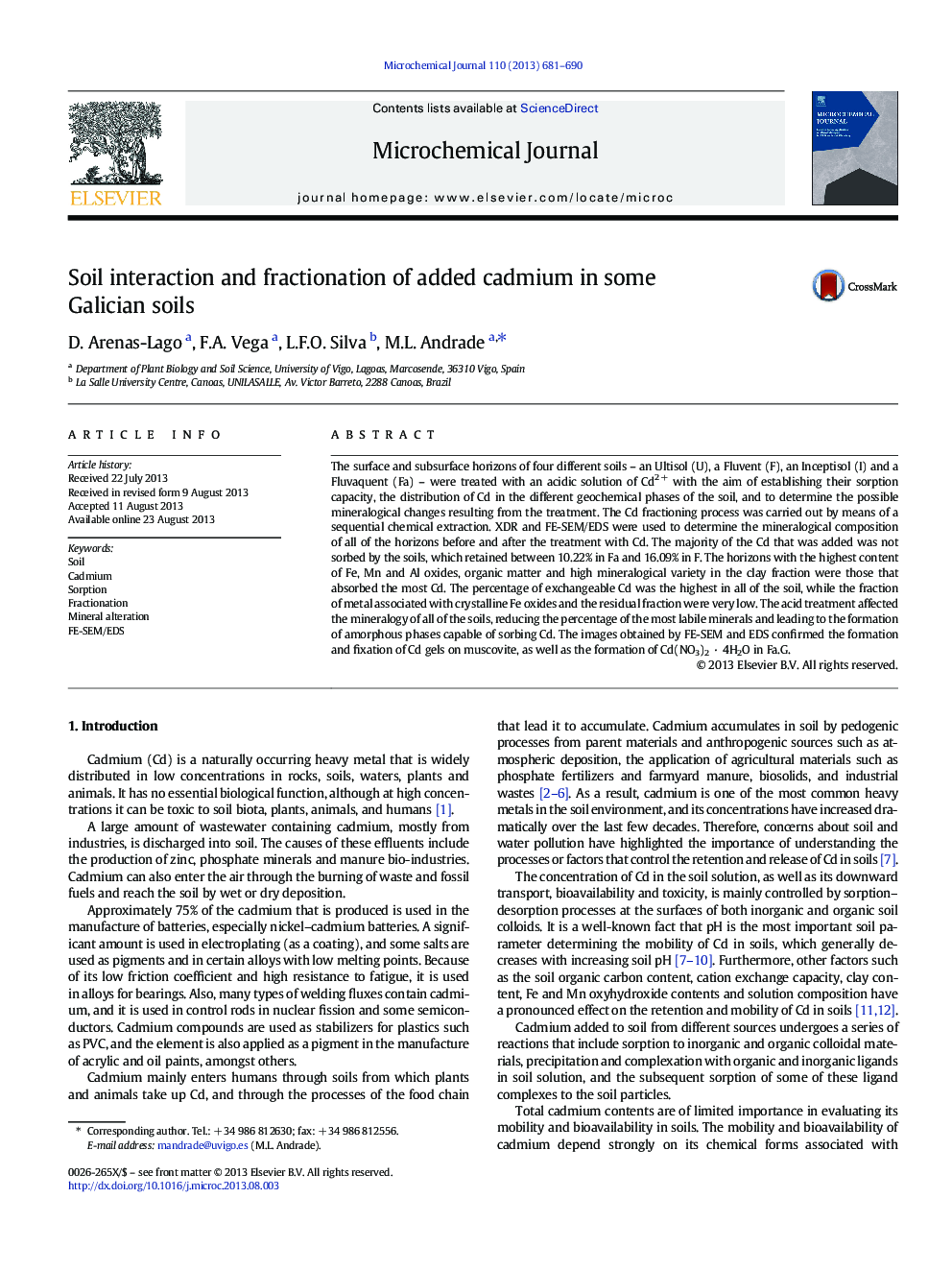| Article ID | Journal | Published Year | Pages | File Type |
|---|---|---|---|---|
| 7644186 | Microchemical Journal | 2013 | 10 Pages |
Abstract
The surface and subsurface horizons of four different soils - an Ultisol (U), a Fluvent (F), an Inceptisol (I) and a Fluvaquent (Fa) - were treated with an acidic solution of Cd2 + with the aim of establishing their sorption capacity, the distribution of Cd in the different geochemical phases of the soil, and to determine the possible mineralogical changes resulting from the treatment. The Cd fractioning process was carried out by means of a sequential chemical extraction. XDR and FE-SEM/EDS were used to determine the mineralogical composition of all of the horizons before and after the treatment with Cd. The majority of the Cd that was added was not sorbed by the soils, which retained between 10.22% in Fa and 16.09% in F. The horizons with the highest content of Fe, Mn and Al oxides, organic matter and high mineralogical variety in the clay fraction were those that absorbed the most Cd. The percentage of exchangeable Cd was the highest in all of the soil, while the fraction of metal associated with crystalline Fe oxides and the residual fraction were very low. The acid treatment affected the mineralogy of all of the soils, reducing the percentage of the most labile minerals and leading to the formation of amorphous phases capable of sorbing Cd. The images obtained by FE-SEM and EDS confirmed the formation and fixation of Cd gels on muscovite, as well as the formation of Cd(NO3)2 · 4H2O in Fa.G.
Related Topics
Physical Sciences and Engineering
Chemistry
Analytical Chemistry
Authors
D. Arenas-Lago, F.A. Vega, L.F.O. Silva, M.L. Andrade,
